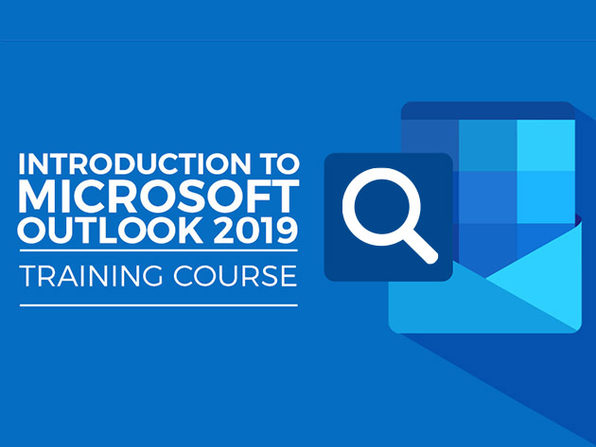
University of Michigan Online Courses
Many online courses are offered by the University of Michigan for students looking to acquire the knowledge they desire. They can be taken either for free or for a charge. The university faculty teaches the courses. These courses can be viewed on edX and Coursera.
U-M is a founding partner in Coursera since 2012. Since then, their courses have racked up nearly 6 million enrollments, reaching over 190 countries. They offer online courses in Python programming, financial markets and data privacy. Each course lasts between two to ten weeks and is flexible and self-paced.
Prices
Online degree programs are possible with the University of Michigan's edX or Coursera. While most courses are free, some require payment for a certificate or monthly fees. Prices vary depending on the type of course you enroll in and the time you complete it.

Coursera subscriptions are available for as little as $1500 up to $1500. You can pay the fees via PayPal, ACH, credit card or by check. The payment method you choose is up to you.
Instructors
Coursera features over three thousand courses, taught by world-class professors at more than 200 universities and businesses. Many courses are free and can lead to certification. The program features more than three thousand courses taught by leading experts in their fields, as well as a wide range of subjects from art to mathematics. Many courses are offered in multiple languages. They can also be self-paced so students can work at their own pace.
Coursera has been working with the University of Michigan for 10 years to promote online education. Coursera provides a global platform for students to learn from experts and from around the world.
Completion time
Coursera Michigan is an online university that offers a variety of degrees. There are many courses available online that you can choose from, and they offer both free and paid options. To learn more about anatomy, you can sign up for a course in the field and then follow your own schedule. Other universities also offer courses for free, including business and psychology.

Coursera, Michigan's online education program, was established in 2012. It has since expanded to include more countries and people. There are 65 courses currently available. A new course is added each month. Coursera offers flexible, self-paced courses, ranging from four to 12 weeks. They may require up to ten hours of work per week, depending on what course you choose.
FAQ
How much does homeschooling cost?
There are no set fees for homeschooling. Some families charge between $0-$20 per lesson. Other families offer free services.
However, homeschooling requires dedication and commitment. Parents should have enough time for their children.
They must also have access to books, supplies, and other learning tools. Homeschoolers often need to take advantage of community events and programs to supplement their curriculum.
Parents should consider the cost of transportation, tutors, extracurricular activities, and other expenses.
Homeschoolers need to be prepared for special occasions, field trips and vacations.
What is the difference in a university and college?
A university is an academic institution providing higher education. It offers postgraduate and undergraduate courses in a variety of fields.
A college is typically smaller and less well-known than a university. While it might offer fewer courses than a university, it often has its own specialist department.
How do I select my major?
Students choose their majors depending on their interests. Some students prefer to major in a subject they enjoy doing because they will find this easier than studying something else. Others are interested in a career where there are few jobs. Others decide to major because they want to earn money while studying. No matter your reasons for choosing a major, you should consider the type of job that you might be interested in after you graduate.
There are many ways to get information about different fields of study. Talk to your family and friends about their experiences. You can check newspapers and magazines to see if any jobs are listed. Talk to a guidance counselor at high school about possible career paths. Visit the Career Services section of your local library. Check out books on various topics from your public library. Use the Internet to search for websites related to specific careers.
What are some ways to get scholarships?
Scholarships are grants to help with college expenses. There are many types and types of scholarships. These include:
-
Federal Grants
-
State Grants
-
Student Loans
-
Work Study Programmes
-
Financial Aid
Federal grants come directly to the U.S. Federal grants generally require that applicants meet certain criteria. You will need to prove financial need.
Each state offers state grants. These funds are offered by individual states based on financial need. Others offer money for specific purposes.
Banks and other lending institutions issue student loans. Students borrow money to pay tuition and other living expenses.
Work-study programs encourage employers to hire qualified student workers. Employers must pay at least the minimum wage to their employees.
Financial aid helps low-income families afford college by covering most or all tuition costs.
What is a vocational high school?
Vocational school programs are designed to prepare individuals for specific jobs. These schools may offer general education and training in the skills required by employers.
Vocational education is an important part of our society because it helps young people develop the skills they need to succeed in life. It provides high-quality learning opportunities for all students.
A vocational school gives its students many options. This includes certificates, diplomas/degrees, apprenticeships, certificates as well college transfer programs and other postsecondary credentials. Vocational schools provide both academic and practice-oriented subjects such as math and science, English and social studies.
What is the difference between school and college?
Schools are usually organized into classes (or grades) with a teacher who teaches a group of students. Colleges, which are often larger and offer more specialized classes, may also include university-level programs. While schools tend to focus on the basics, colleges can offer courses in a wide range of subjects, including science, language, business, and arts. Both levels of education are designed to prepare students for higher-level study.
Statistics
- Think of the rhetorical power of nineteenth-century abolitionist Harriet Beecher Stowe, Martin Luther King, Jr., or Occupy Wall Street activists with their rallying cry of “we are the 99 percent.” (bostonreview.net)
- And, within ten years of graduation, 44.1 percent of 1993 humanities graduates had written to public officials, compared to 30.1 percent of STEM majors. (bostonreview.net)
- Data from the Department of Education reveal that, among 2008 college graduates, 92.8 percent of humanities majors have voted at least once since finishing school. (bostonreview.net)
- They are also 25% more likely to graduate from high school and have higher math and reading scores, with fewer behavioral problems,” according to research at the University of Tennessee. (habitatbroward.org)
- “Children of homeowners are 116% more likely to graduate from college than children of renters of the same age, race, and income. (habitatbroward.org)
External Links
How To
Where can I find out more about becoming a teacher?
Teaching jobs are available in public elementary schools, private elementary schools, public middle schools, private middle schools, public secondary schools, private secondary schools, charter schools, private and parochial (Catholic) schools, public and private (non-religious) daycare centers, and other settings.
A bachelor's degree at one of the following institutions is necessary to become a teacher.
-
A four-year university or college
-
Associate's degree program
-
Two-year community college programs
-
These three types of programs can be combined
Candidates must fulfill state requirements to be eligible for teaching certification. These include passing standardized test and having a probationary period.
Most states require candidates to pass a test called the Praxis II. This test measures the candidate’s knowledge in reading, writing mathematics, and language arts.
A lot of states also require applicants to have a specialized licence before they can be certified to teach.
These licenses are issued annually by the state boards of education.
Some states grant licenses without the need for additional testing. In such cases, applicants should contact their state's board for education to find out if it is possible.
Some states won't issue licenses to applicants without a masters degree.
In some states, individuals can apply directly to the state education board for licensure.
The price, duration, and coursework required for licenses can vary greatly.
One example is that some states only require high school diplomas, while others require bachelor's degrees.
Some states require training on specific topics, such literacy or child development.
Some states require candidates have a master's before they can become licensed.
When applying for certification, many states ask prospective teachers about previous employment.
It is possible to mention other professions in your application.
However, the majority of states will accept any previous work experience regardless of what job it was.
You may wish to list your previous job title, position, and years of service.
This information is often helpful to potential employers.
It shows them that your skills and experiences are relevant.
Working can give you new skills and valuable experience.
Future employers can view your resume.